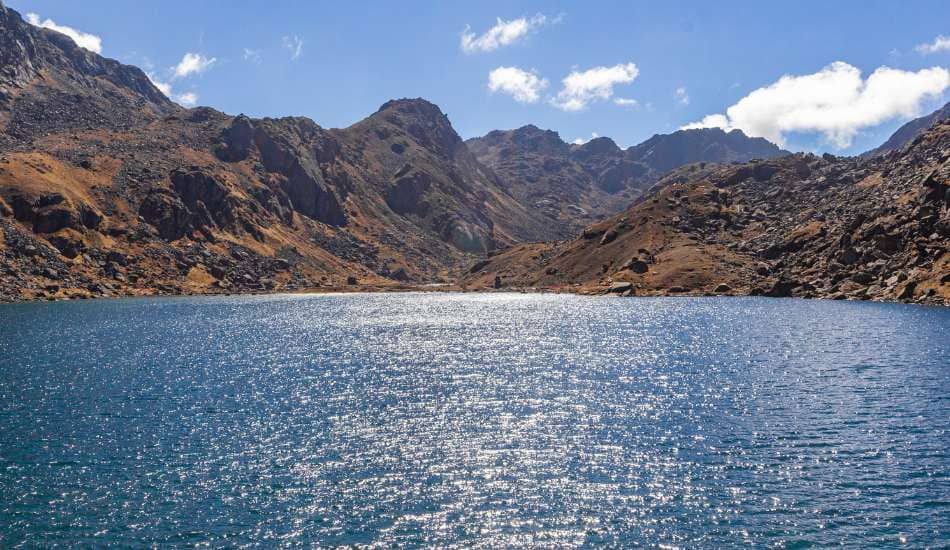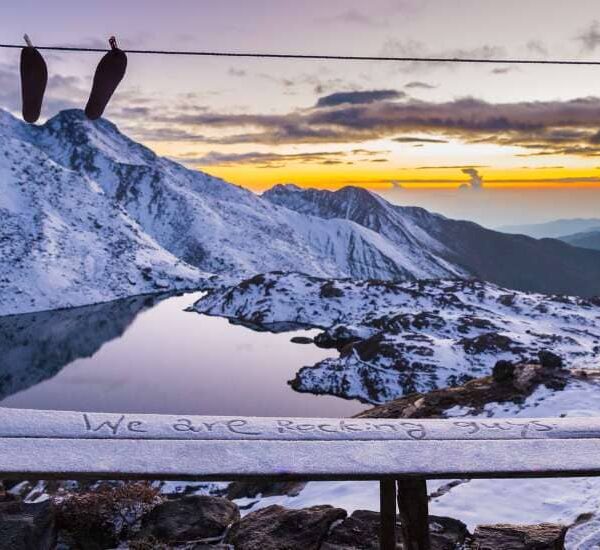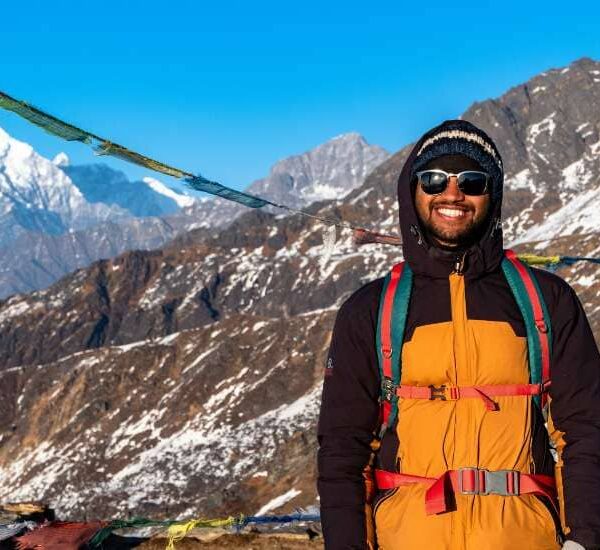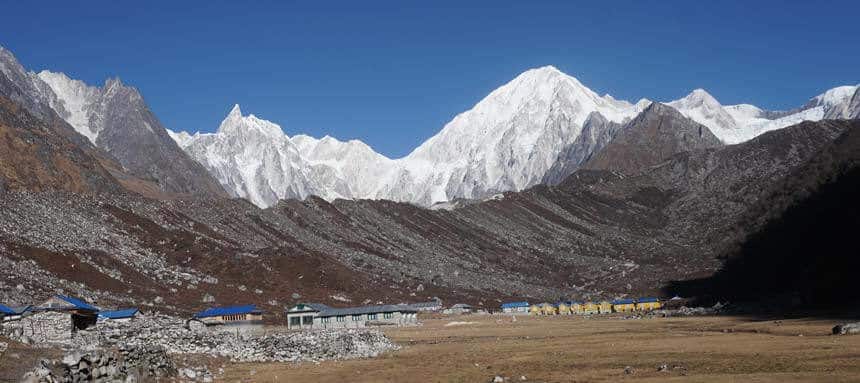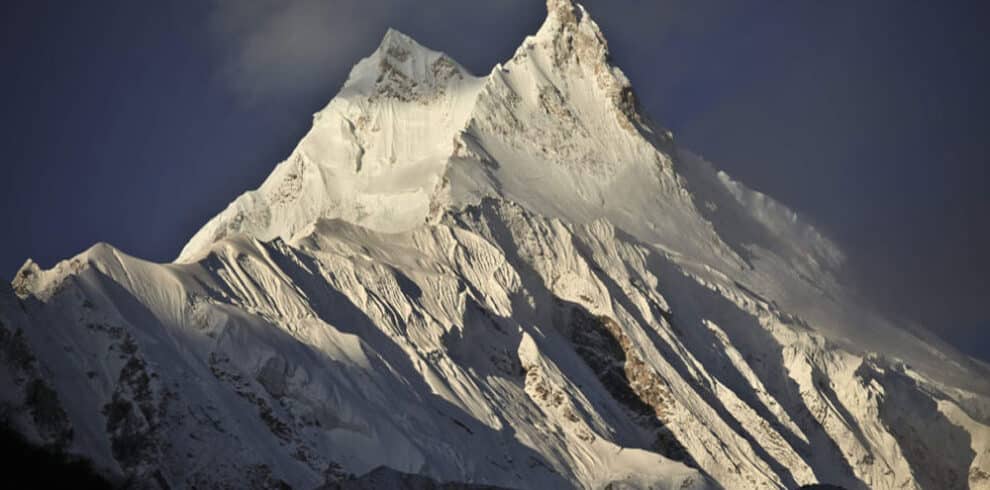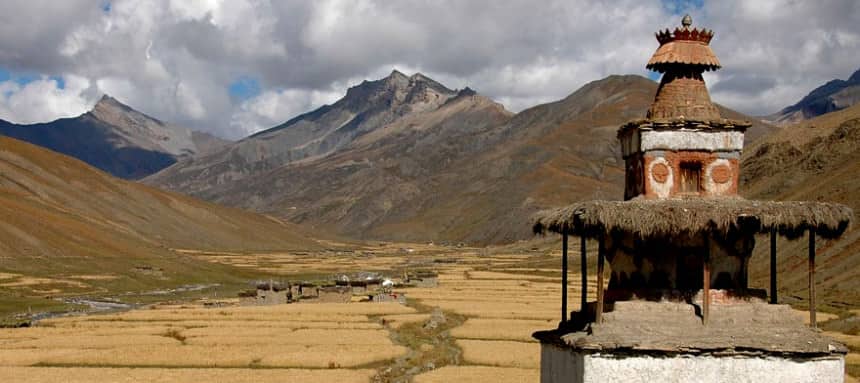Langtang GosaikundaTrek Overview
Langtang Gosaikunda Trek at an altitude of 4600 m is a very famous holy lake for Hindus and Buddhists. This trek is filled with beautiful scenery, including forests of oak, rhododendron, and pine nestled between ancient settlements. The Langtang Gosaikunda Trek is also known as the “gorge of glaciers” due to its natural beauty and traditional charm, making it a boon for both locals and travelers. Langtang Gosaikunda Lake lies at a height of 4,000 meters above sea level.
On the Langtang Gosaikunda Trek, we will observe a large number of ethnic communities, with the main inhabitants being Tamang, Gurung, Sherpa, and other tribes. Both Hindus and Buddhists make a pilgrimage to bathe in Gosaikunda during the festival of Janai Purnima. On the Langtang Gosaikunda Lauribina Pass Trek, we offer you the chance to enjoy the eye-catching views of the hidden valley and the awesome Himalayan vistas, as well as the snow-covered mountains like Langtang Lirung, Langtang-Ri, Ganesh Himal, Langsisa Ri, and many more.
We begin our 15-day trip in Kathmandu with visits to UNESCO World Heritage sites before heading to one of the most popular trails in the Nepal Himalaya: the Langtang Gosaikunda Lake route.
One World Holidays Nepal will make your trip fantastic and a lifetime experience on the Langtang Gosaikunda Lauribina Pass Trek.
Highlights of Langtang Gosaikunda Trek
- Visit the picturesque Kyanjin Gompa and tour the local cheese factory.
- Climb Kyanjin Ri and Tserku Ri to enjoy magnificent views of the Tibetan and Langtang mountains.
- Experience the warmth and hospitality of the Sherpa and Tamang people in the Helambu region.
- Hike to the sacred lakes of Gosainkunda and traverse the Lauribina Pass at 4,610 meters.
- Offers breathtaking views of the stunning peaks of Langtang Himal and Ganesh Himal.
Langtang Gosaikunda Trek: Complete Itinerary and Information
Upon your arrival at Tribhuvan International Airport, we offer you pick up facility from the airport and manage your stay at the most comfortable hotel in the city. You get to meet the team of trekkers and together we prepare for the trek.
Today would be the most exhilarating day where you will be introduced to the most pious Hindu and Buddhist religious places that are listed in the UNESCO World Heritage sites and elucidates you to the entire mysticism over its existence Pashupatinath temple, Boudhanath stupa, Patan Durbar Square, and Swayambhunath stupa.
We leave Kathmandu in the morning for Syabrubesi, a village that is also the starting point for treks into the Langtang valley. Our journey will be on a winding road through frequent switchbacks. On a clear day, we get to enjoy outstanding views of Manaslu, Annapurna, and Ganesh Himal. Our trek for today ends with a descent into the small village of Syabrubesi.
We begin our trek from Syabrubesi along the Langtang Khola. We move upward and downward simultaneously through oak and rhododendron forests. After crossing a bridge over the Langtang Khola (tiny river), we ascend on a steep trail which will lead us to the Lama Hotel.
We continue ascending from Lama Hotel and enjoy the mountain landscape with abundant waterfalls. As we reach the green meadows of Ghoda Tabela, we begin to see the white peaks of the Langtang range. Our trail continues to climb up the widening valley, passing a few temporary settlements used by herders. We pass by a Buddhist monastery before reaching the Langtang village, which was affected by the April 2015 earthquake.
We will start our journey to Kyangjin Gompa, a principal monastery of the region. We go through water mills, prayer wheels, Chortens, with sacred mounds of rocks with inscriptions carved on them. We also pass by the largest mani wall in Nepal, made from stone with prayers written on them. After the short trek, we explore the Buddhist shrine in Kyangjin Gompa and surrounding areas with the amazing views of the mountains.
We spend the whole day exploring Tserko Ri which will also help us acclimatize to the high altitude. We begin early in the morning. The trek passes through yak pastures before ascending to Tserko Ri. The sunrise view from the top of Tserko Ri is extraordinary. We get to explore the beautiful monastery while enjoying views of the Himalayas, glaciers, birds, and yaks.
Today after breakfast, we will learn about the people of Langtang and their centuries-old struggle in this valley, enduring natural disasters while maintaining ancient Tibetan Buddhist practices. Their livelihood, which depends on cows, sheep, yaks, and horses, reflects the unique Bhotia culture. After that, we will start our journey down to see the influence of another ethnic group, the Tamang, in the Langtang valley. Overnight at Thulo Syapru.
On our way to Sing Gompa, we will first come across a village called Dimsa. The trail further continues less steeply, through rhododendron, hemlock, and oak forests to Sing Gompa. Along the journey, we will catch a wonderful glimpse of Langtang Himal and Langtang valley.
The trail initially passes through an area entirely dominated by rhododendron and then through a forested area. The area between Sing Gompa and Laurebina Yak is a sanctuary for the red panda, an endangered species that the Nepalese call "cat bear." We will then climb a wider route through alpine country to arrive at Gosainkunda. We will explore the Lake region.
The route towards Ghopte ascends uphill and through moraines. After passing three other small lakes, we will further ascend and cross Laurebina La (4,609m/15,121ft). The path then goes downhill to Phedi. Continue to walk up and down, crossing rocky hills with pine and rhododendron trees.
Today the trek continues with ups and downs through the forest and walking on a ridge of a hill. We can also have a good view of Tadhi valley and Helambu and cross Thadepati Pass (3,690m). The trail continues through the dense forest to Magen Goth, from where the view of Langtang range and the Gosaikunda peak is dramatic. After that, we will reach Kutumsang (2,470m). Overnight at Kutumsang Lodge.
Today's trek continues downhill to Gul Bhanjyang (2,130m) and Pati Bhanjyang (1,830m), crossing through villages inhabited by the Tamang and Sherpa people with their unique culture and old villages. After Pati Bhanjyang, the trail leads up to Chisapani (2,215m), from where there is an awesome view of the Ganesh Himal range and Langtang range. Overnight at Chisopani.
Today we will trek up to Borlang Bhanjyang (2,430m) and then descend through Tamang villages, farmland, dense forest, and Shivapuri National Park until we reach Sundarijal. From there, we will catch a private car and return to Kathmandu and drop you at your hotel. The rest of the time can be spent shopping for gifts and souvenirs from Nepal for your family and friends. There will be a farewell dinner (Nepali Food) to celebrate the successful completion of our journey. Overnight in Kathmandu.
Your wonderful adventure in Nepal comes to an end today. We wish you all the best. A representative will take you to the airport approximately 3 hours before your scheduled flight.
Langtang Gosaikunda Helambu Trek Cost Includes & Excludes
Cost Includes
- Pick up and drop off from and to International airport.
- 3 nights hotel in Kathmandu (first two nights and last one night).
- Langtang National Park Permit.
- TIMS Card (Trekking's Informational Management System).
- One porter for each two people.
- Accommodation in tea houses twin sharing (private room/ Shared bathroom).
- 3 Meals a day – breakfast, lunch, Dinner during the trek (Anything from the menu).
- All land transportation.
- Sightseeing tour car A/C with driver.
- Farewell dinner at Nepalese cultural restaurant after the trek in Kathmandu.
- All taxes and Company service charges.
Cost Excludes
- Nepal Visa fee (bring accurate USD cash and two passport size photographs).
- International airfare to and from Kathmandu.
- Lunch and Dinner in Kathmandu.
- Monument sites entrance fees while sightseeing in Kathmandu.
- Excess baggage charges.
- Extra night accommodation in Kathmandu because of early arrival, late departure, and earlier return from the mountain (due to any reason) than the scheduled itinerary.
- Travel and rescue insurance.
- Personal expenses (phone calls, internet / Wi-Fi, laundry, bar bills - tea/coffee, hot chocolate, juice, beer, battery recharge, extra porters, bottled or boiled water, shower etc.).
- Tips for guides and porters (Tipping is expected, but not compulsory).
FAQs
Permits are the entry cards, necessities by the government for trekkers and the local community’s welfare. To embark on the scenic Gosaikunda Lake Trek, you’ll need to obtain two essential permits:
- TIMS Card (Trekkers’ Information Management System): This mandatory permit helps track trekkers’ movements and ensures their safety. You can obtain it online beforehand or at Kathmandu’s TAAN (Trekking Agencies Association of Nepal) office. The current cost for foreigners is NRs 2000 (approximately USD 16).
- Langtang National Park Entry Permit: This permit grants access to Langtang National Park, where Gosaikunda Lake is located. You can purchase it at the Dhunche check post, the park’s entry point. The current cost for foreigners is NRs 3000 (approximately USD 24).
Remember, the cost of permits can vary depending on season, time, and currency. Double-check or contact your agencies if needed.
The standard duration for the Langtang Gosaikunda Helambu Trek is approximately 14-18 days, depending on the itinerary and trekking pace. This includes time for acclimatization, exploration, and travel to and from the trailhead.
The best seasons for this trek are spring (March to May) and autumn (September to November). The weather is relatively stable during these periods, with clear skies and moderate temperatures, offering the best views and trekking conditions.
This trek is considered moderately challenging. It involves walking 5-7 hours daily on rugged terrain, including steep ascents and descents. While prior trekking experience is beneficial, it is not mandatory. Good physical fitness and acclimatization to altitude are important.
The Langtang region is generally safe for trekking. However, it’s important to trek with a guide or in a group, follow the trail, and stay informed about weather conditions. Trekking insurance that covers high-altitude trekking is highly recommended.
Accommodation along the trek is typically in tea houses or lodges, offering basic amenities such as a bed, blanket, and shared bathrooms. Facilities might be more rustic in some places, especially in higher altitudes. It is recommended that you bring a sleeping bag.

